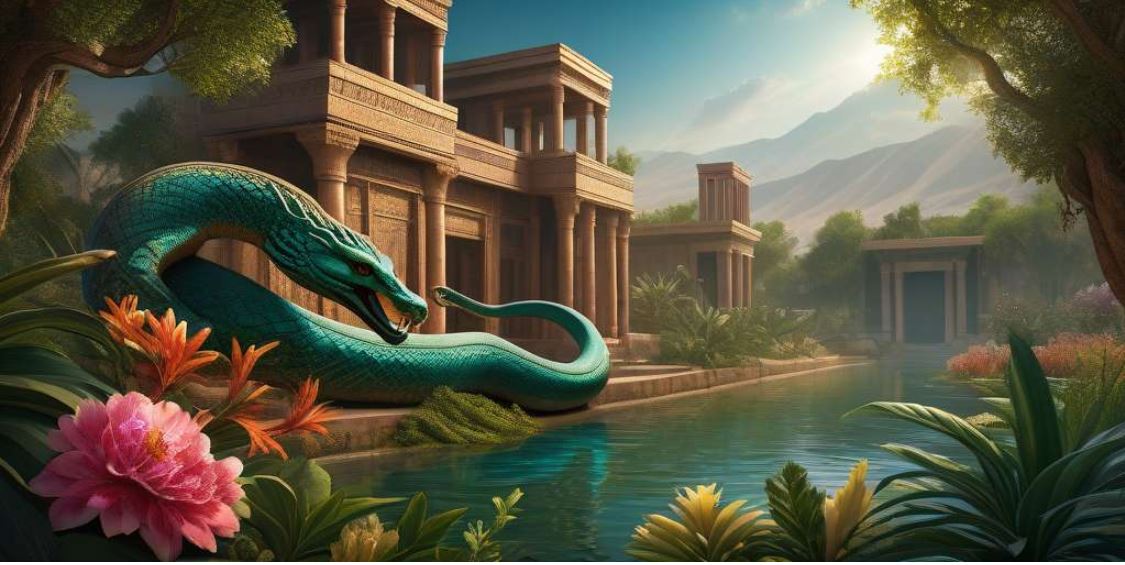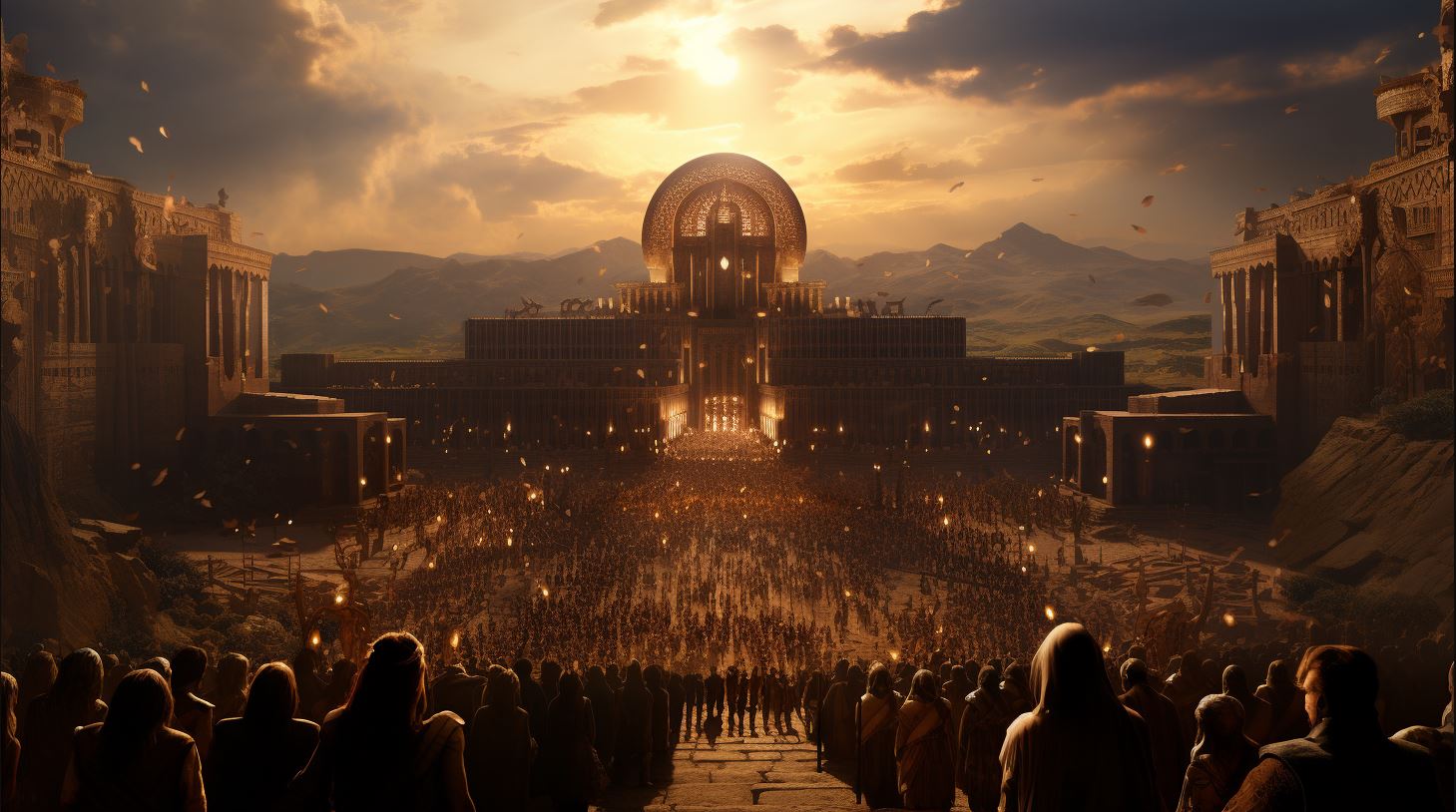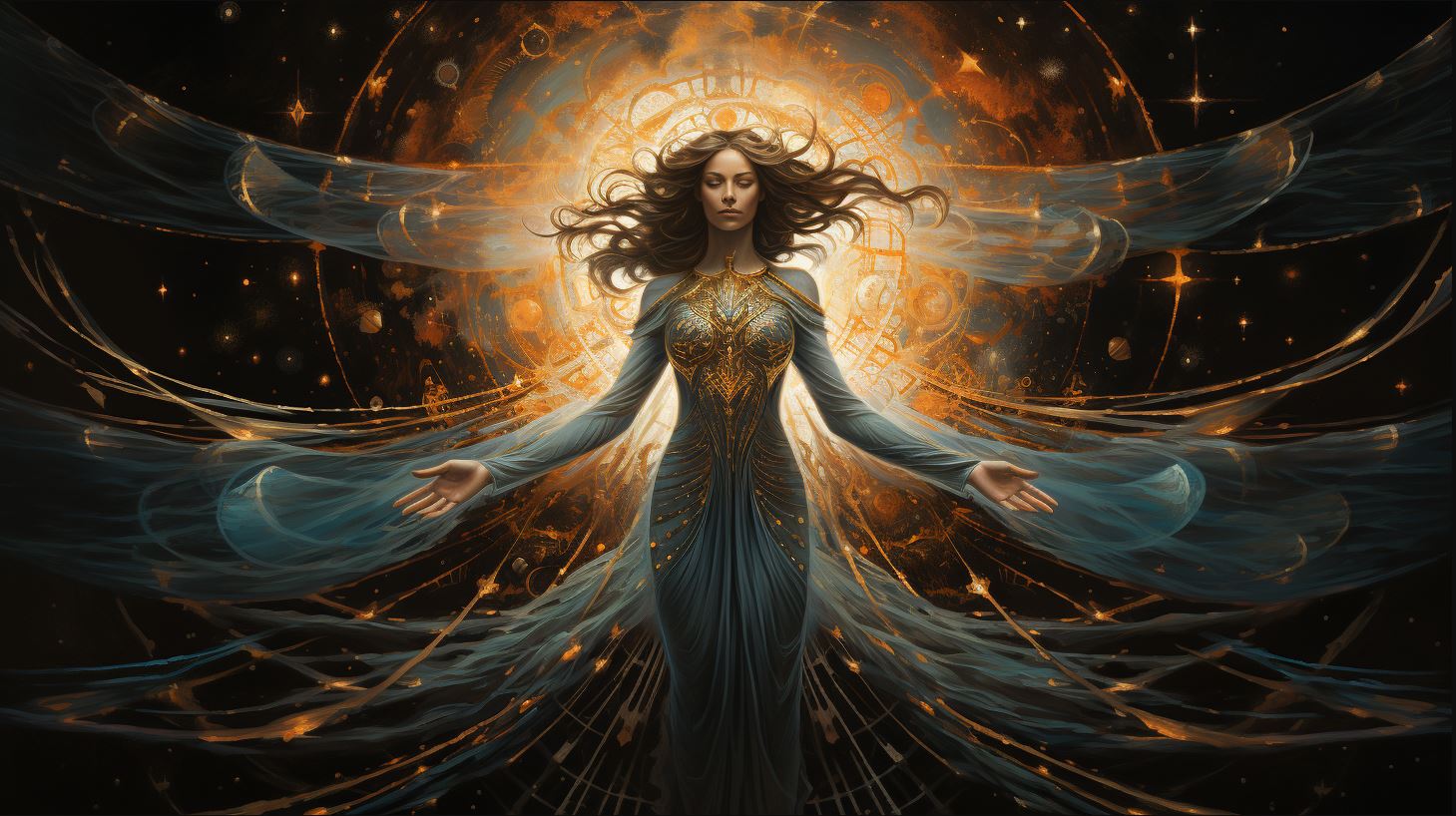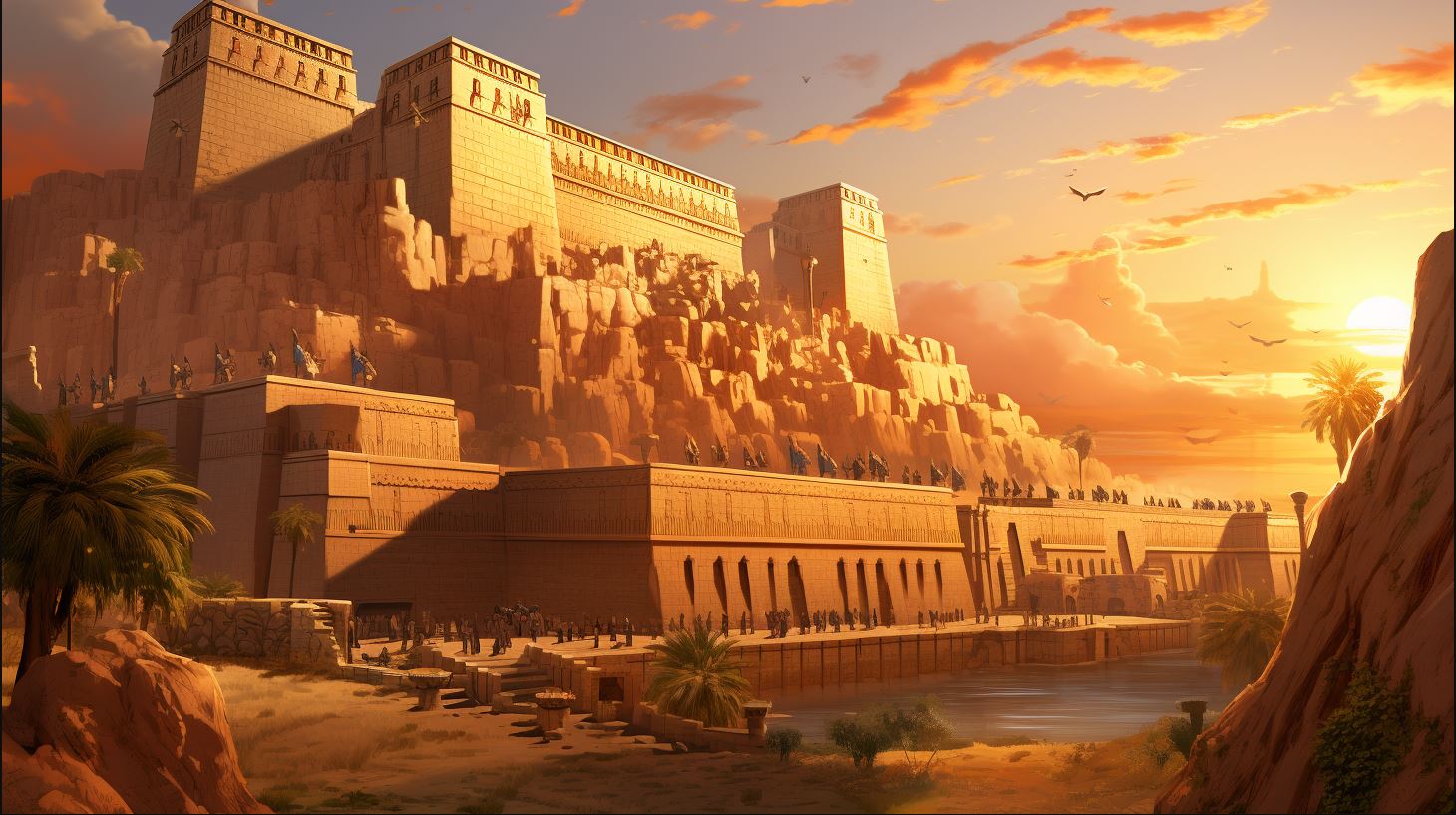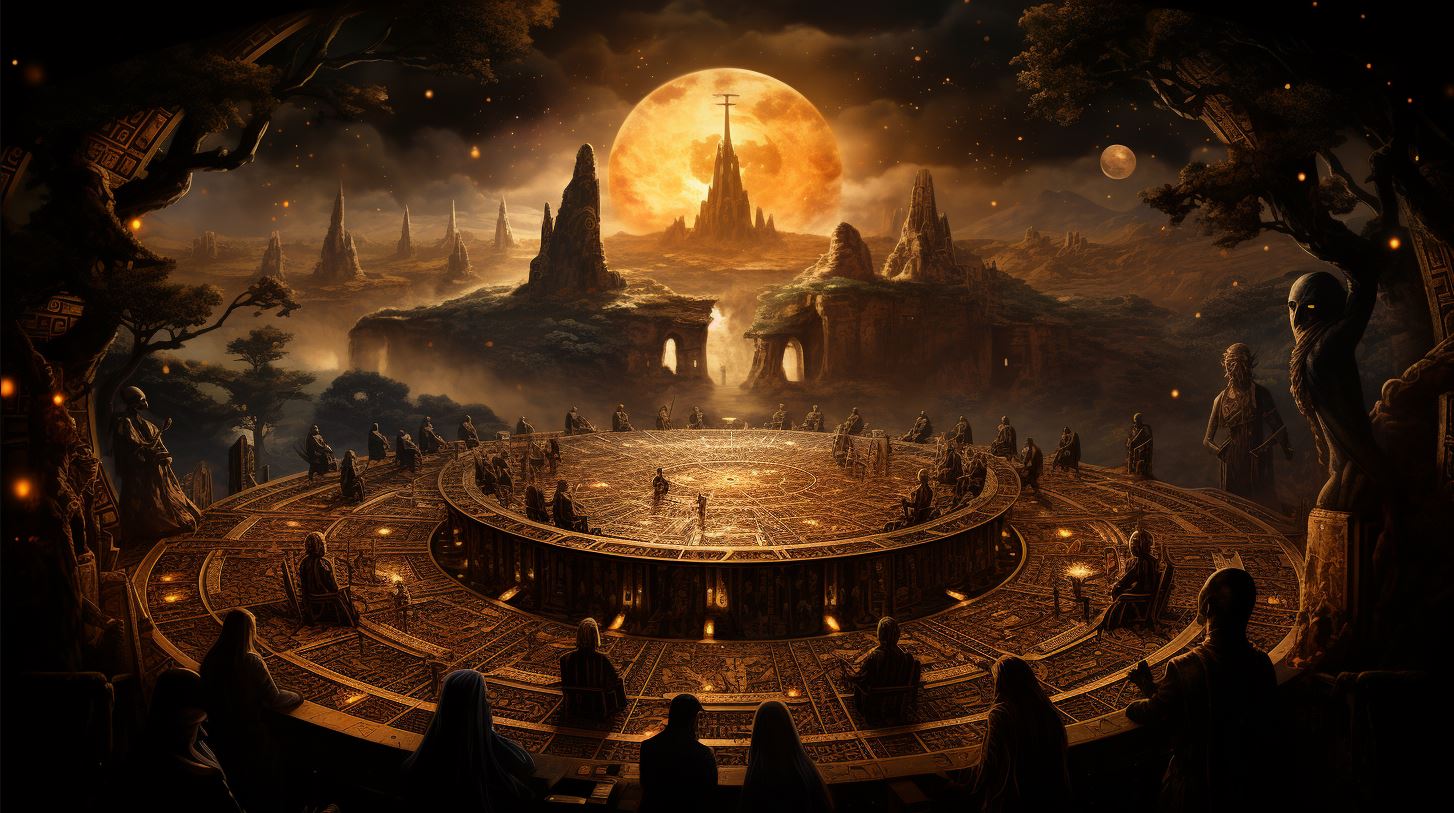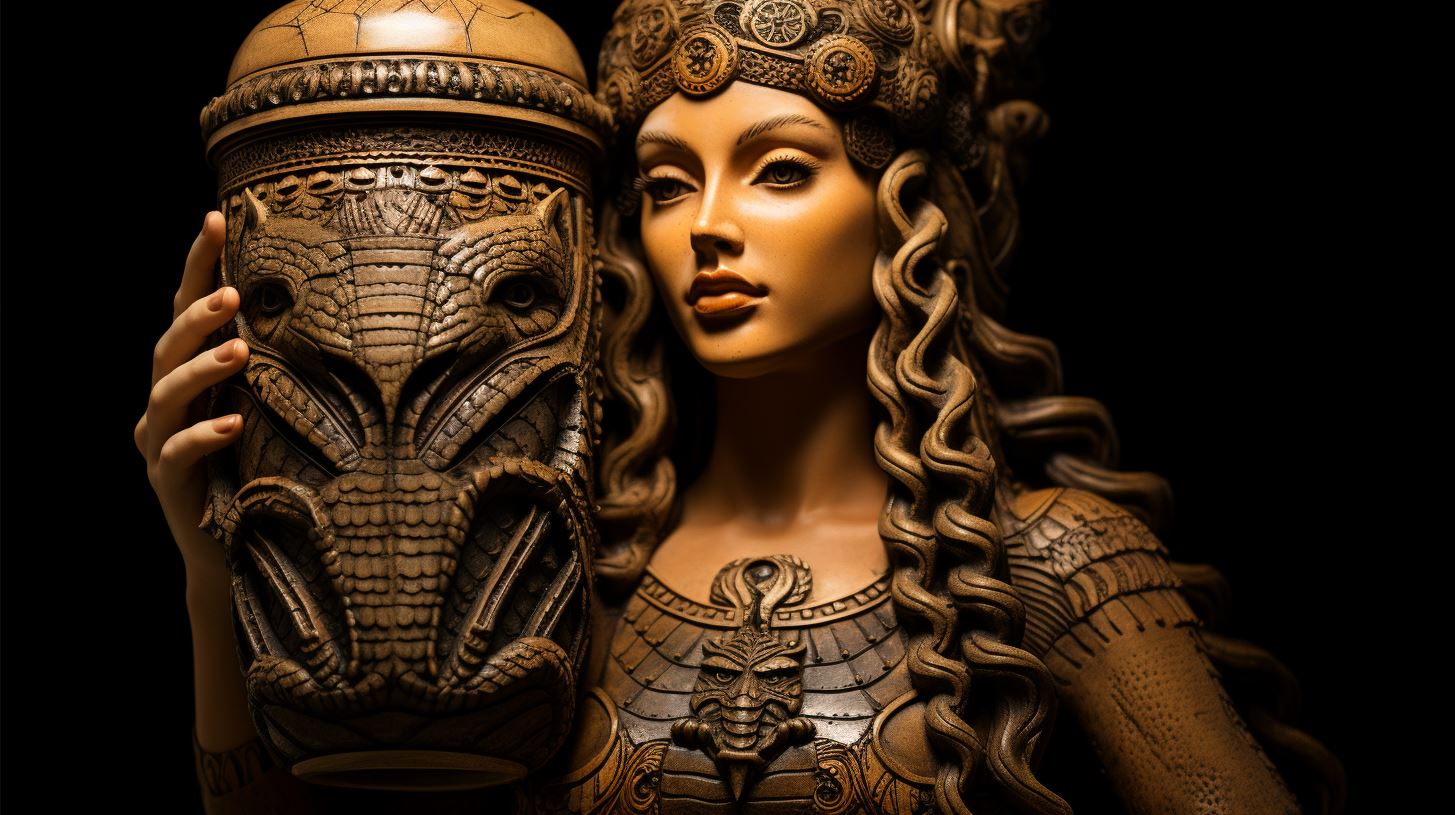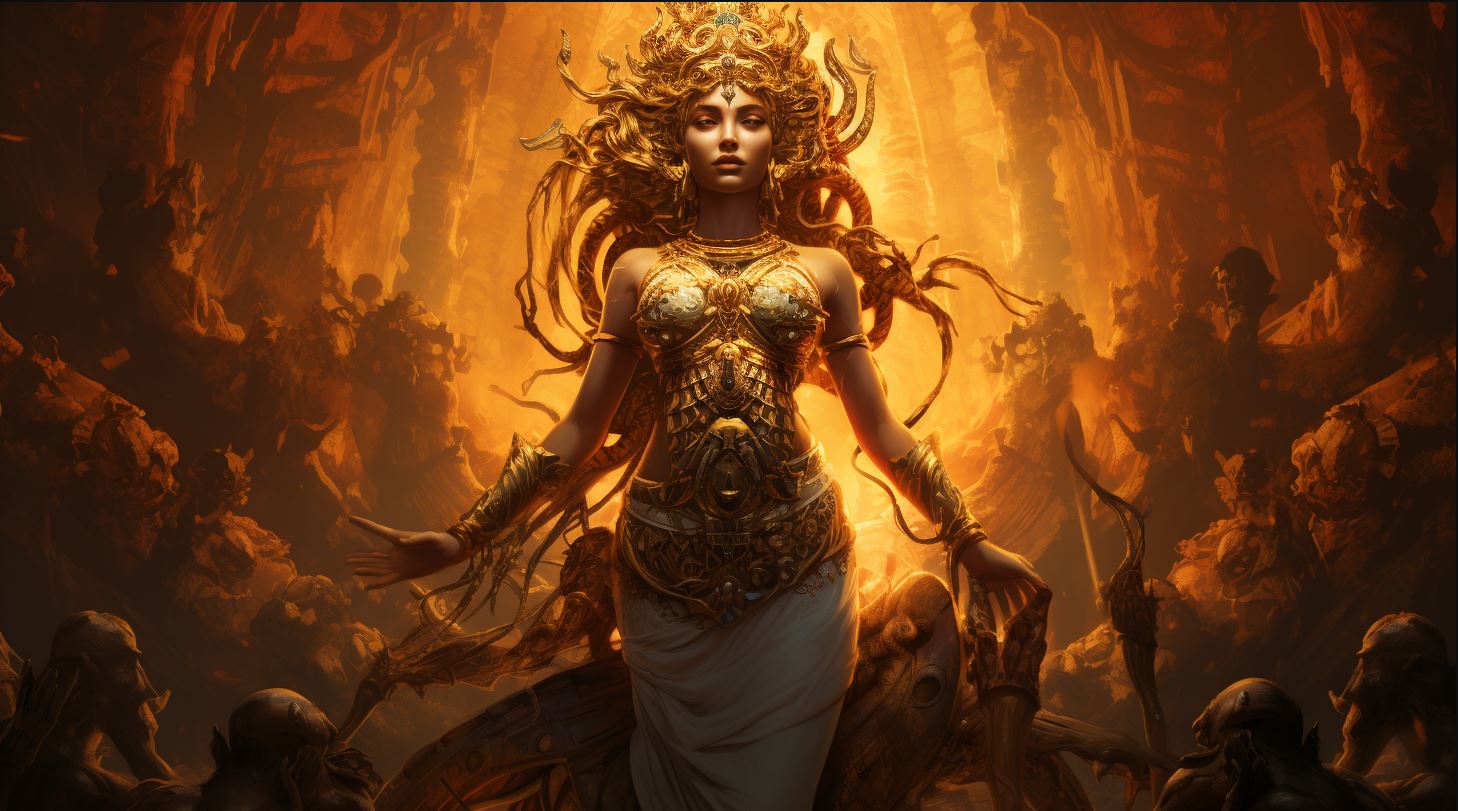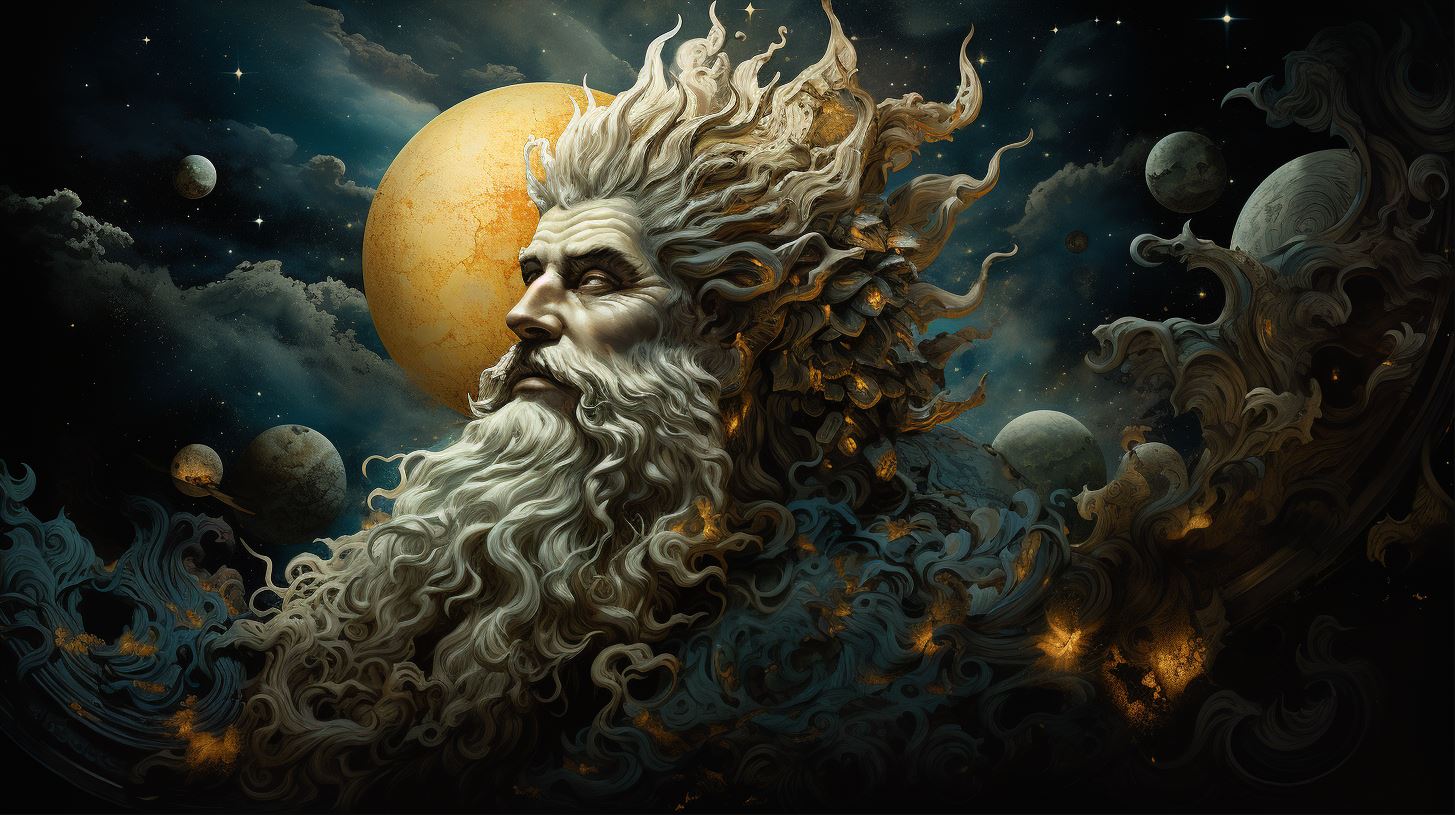Ningizzida: Exploring the Mesopotamian Deity Associated with Vegetation and the Underworld
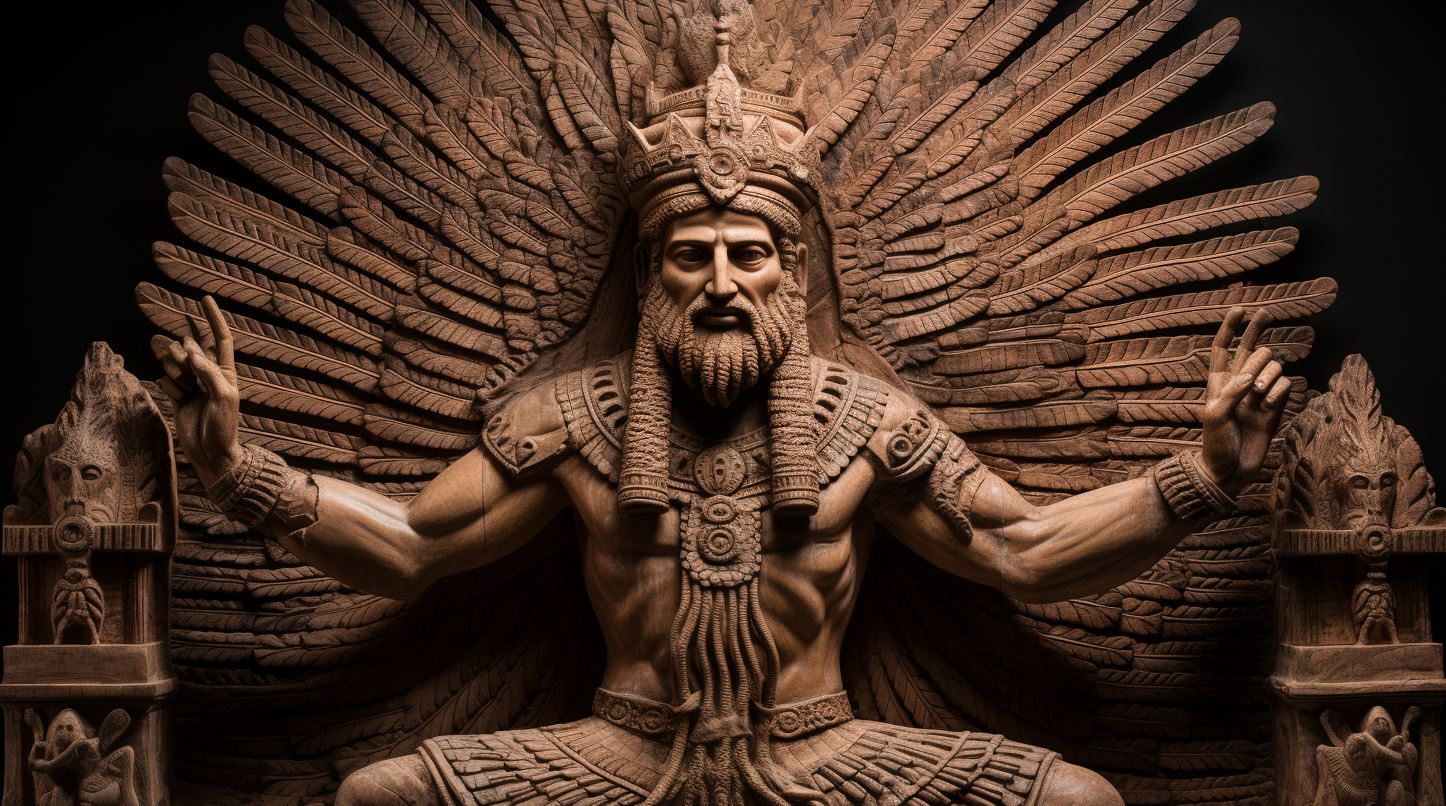
Ningizzida, a significant deity in Mesopotamian mythology, holds associations with vegetation and the underworld. This ancient god, also known as the “Lord of the Good Tree,” played a vital role in agricultural practices and was worshiped in various Mesopotamian cities and temples.
Depicted as a serpent with double heads coiled in a double helix, Ningizzida symbolized fertility and healing powers. His interactions with other gods, such as Ninazu, further exemplify his influence and legacy in Mesopotamian culture, leaving a lasting impact on ancient beliefs and artistic representations.
The study of Ningizzida continues to captivate interest in modern times.
Overview of Ningizzida and its Significance in Mesopotamian Mythology
The Role of Ningizzida as a Mesopotamian Deity
Ningizzida, an ancient Mesopotamian deity, held a significant role in the mythological beliefs of the region. This divine being was revered and worshiped for its association with various aspects of life, including vegetation and the underworld.
As an integral part of religious practices, Ningizzida embodied the forces of nature and played a crucial role in sustaining the balance of the cosmos.
Associations of Ningizzida with Vegetation and the Underworld
One of the primary associations of Ningizzida was with vegetation, symbolizing its vital role in the cycle of life and fertility.
This deity was believed to govern the growth and abundance of plants, ensuring a bountiful harvest for the community. Additionally, Ningizzida held a close connection to the underworld, representing the cycle of death and rebirth.
Through this association, Ningizzida became a bridge between the mortal realm and the divine realm.
Descriptions and Representations of Ningizzida in Ancient Texts
Ancient texts provide detailed descriptions of Ningizzida, offering insights into its physical appearance and characteristics. Depicted as a serpent with two heads, coiled in a double helix, Ningizzida’s representation symbolized its power as a deity associated with both the natural and supernatural realms.
These descriptions highlight Ningizzida’s role as a guardian, protector, and bestower of blessings, further enhancing its importance within Mesopotamian mythology.
The Worship and Temples dedicated to Ningizzida
The deity Ningizzida, revered in ancient Mesopotamia, held a prominent position in various cities and temples, where worshipers paid homage to this mysterious god. The adoration of Ningizzida spanned across several Mesopotamian regions, reflecting the significance and popularity attributed to this deity.
Cities like Lagash, Girsu, and Isin were known for their dedicated temples, where rituals and offerings were conducted to honor Ningizzida.
Ningizzida’s Adoration in Various Mesopotamian Cities and Temples
Among these cities, Lagash served as a centerpiece for Ningizzida’s worship, with its temple dedicated solely to the deity. The temple, called the Esarhaddon Temple, housed sacred statues and religious artifacts associated with Ningizzida.
Additionally, Girsu and Isin also had temples devoted to the god, where believers gathered to seek blessings and offer their devotion.
Rituals and Offerings in Honor of Ningizzida
Worshipers conducted elaborate rituals and ceremonies to express their reverence for Ningizzida. These rituals involved cleansing ceremonies, incense offerings, and prayers to invoke the favor of the deity. Priests and priestesses played a crucial role in performing these rituals, acting as intermediaries between the human realm and the divine presence of Ningizzida.
Significant Mythological Stories Involving Ningizzida
Ancient Mesopotamian myths and legends often depicted Ningizzida as a key character in important narratives. These stories highlighted the deity’s power and influence over various aspects of life and the natural world.
For instance, one myth tells the tale of Ningizzida’s journey through the underworld, symbolizing the cycle of life, death, and rebirth.
The mythological stories surrounding Ningizzida provided insights into the Mesopotamians’ belief in the deity’s role as a bridge between the realms of the living and the dead, further emphasizing the significance of rituals and worship dedicated to Ningizzida.
Ningizzida’s Associations with Other Deities
Ningizzida, the Mesopotamian deity, held significant relationships with various other gods, revealing a complex network of connections within the pantheon. These associations shed light on Ningizzida’s role and influence in Mesopotamian religious beliefs and practices.
Ningizzida’s Relationships with Ninazu and Other Gods
One of the notable associations of Ningizzida was with Ninazu, another prominent Mesopotamian deity. The connection between the two gods depicted a symbiotic relationship between vegetation and the underworld, highlighting their shared influence on life and death aspects.
Ningizzida’s role as a mediator between the earthly realm and the realm of the dead further emphasized this connection.
In addition to Ninazu, Ningizzida also shared associations with several other gods in the Mesopotamian pantheon.
These relationships demonstrated the interconnectedness and interdependence of deities in the ancient beliefs. Each god represented different aspects of nature, fertility, or specific domains, and Ningizzida’s interactions with them showcased its multifaceted nature.
Ningizzida’s Connections to Sumerian and Babylonian Deities
Ningizzida’s influence extended beyond a single city or region, reaching both Sumerian and Babylonian cultures. In Sumerian mythology, Ningizzida had connections to Enki, the god of water and wisdom . This association linked Ningizzida’s role in vegetation and fertility to Enki’s domain of water, highlighting their shared importance in sustaining life.
Within Babylonian mythology, Ningizzida formed connections with Marduk, the supreme god and creator of the world. This association elevated Ningizzida’s status and showcased its involvement in the creation and maintenance of the cosmic order.
Symbolic Representations and Depictions of Ningizzida with Snakes
Ningizzida’s distinctive representation as a serpent with two heads coiled in a double helix stood out among Mesopotamian deities. This symbol of a double-headed snake conveyed notions of duality, power, and transformation.
The snake’s connection to fertility and healing also tied into Ningizzida’s role in nature’s regenerative forces.
Artistic depictions of Ningizzida with snakes represented its association with both the spiritual and natural realms.
These representations often emphasized the serpent’s connection to the underworld, emphasizing Ningizzida’s role as a bridge between life and death, regeneration and decay.
In conclusion, Ningizzida’s associations with other deities demonstrated its interconnectedness within the Mesopotamian pantheon.
Through relationships with gods like Ninazu, Enki, and Marduk, Ningizzida’s multifaceted nature and its influence on various aspects of life, death, and nature were revealed, shaping the religious beliefs and practices of ancient Mesopotamia.
The Impact and Legacy of Ningizzida in Mesopotamian Culture
Ningizzida, a powerful deity in Mesopotamian mythology, left a profound impact on the culture and beliefs of ancient Mesopotamia. This section explores the lasting influence of Ningizzida in various aspects of Mesopotamian society, including artwork, religious practices, and contemporary interest in this enigmatic god.
Influence of Ningizzida in Ancient Mesopotamian Art and Iconography
A striking testament to Ningizzida’s significance can be seen in the realm of ancient Mesopotamian art and iconography. Numerous depictions of this deity in various forms have been discovered, showcasing his serpent-like representation with double heads coiled in a double helix.
These artistic representations not only convey Ningizzida’s association with fertility and healing but also reveal the Mesopotamians’ reverence for these aspects of nature.
Artworks featuring Ningizzida have been found in temples, palaces, and religious artifacts, reflecting the belief in his role as a protector and bestower of strong natural forces.
Through their exquisite artistry and detailed portrayals, these ancient creations attest to Ningizzida’s enduring influence and his importance in ancient Mesopotamian culture.
Ningizzida’s Influence on Ancient Mesopotamian Beliefs and Practices
Beyond the artistic realm, Ningizzida played a crucial role in shaping the religious and cultural practices of ancient Mesopotamia. As the deity associated with vegetation and the underworld, Ningizzida held significant importance in agricultural rituals and ceremonies.
- His connection with the plant world made him a key figure in agricultural festivals, where offerings and prayers were made for abundant harvests and fertility of the land.
- Devotees believed that invoking Ningizzida’s blessings ensured the prosperity of their crops and safeguarded their livelihoods.
- Moreover, Ningizzida’s association with the underworld made him a pivotal figure in funerary rites and rituals, guiding souls through the realm of the dead and offering protection and healing in the afterlife.
This profound influence ripples through ancient Mesopotamian beliefs and practices, emphasizing Ningizzida’s role as a divine intermediary and provider of growth, abundance, and spiritual guidance.
Continuing Interest and Study of Ningizzida in Modern Times
Even in modern times, the intrigue and fascination surrounding Ningizzida persist. Archaeologists, historians, and scholars continue to study and explore the depths of Mesopotamian mythology, unearthing new insights into the mysteries surrounding this revered deity.
Ningizzida’s depiction in ancient texts and artwork offers a valuable window into the religious and cultural beliefs of ancient Mesopotamia. These discoveries fuel ongoing research and academic discourse, deepening our understanding of a civilization that thrived thousands of years ago.
Furthermore, enthusiasts and individuals interested in ancient mythology find allure in Ningizzida’s unique serpentine representation and the multifaceted symbolism surrounding the deity. The enigmatic nature of Ningizzida continues to captivate and inspire, ensuring the legacy of this Mesopotamian god lives on in contemporary discussions and scholarly pursuits.
.











